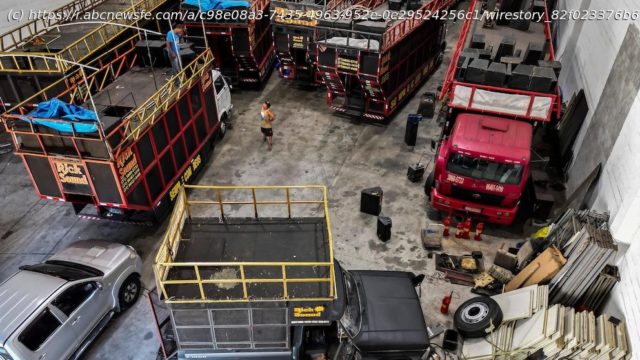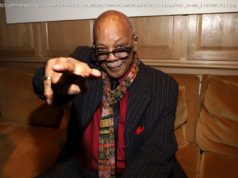Behemoth sound trucks known as electric trios are a fixture of Brazil’s Carnival festivities and draw millions to the streets
Sound begins blasting ear drums and rattling bones even before the speakers — hauled by big rigs creeping their way through Brazil’s thronging Carnival crowds — draw near.
The behemoth sound trucks known as electric trios are a Brazilian innovation that amplified music and effectively did away with front-row seats — making Carnival more accessible. In the seven decades since the first one hit Brazil’s streets, they have become a fixture of the country’s annual pre-Lenten festivities and draw millions to the streets. Singer Caetano Veloso’s ode to the earth-shaking vehicles proclaimed that the only people not following them must already be dead.
From Salvador, on Brazil’s northeast coast, trios spread throughout the country and found more disciples; an Instagram account that posts seemingly banal videos of the nation’s rigs has about 150,000 followers, with fans praising each trio’s merits. They’ve grown ever more sophisticated and ever larger — with lights, LED screens, dressing rooms and VIP areas.
Their appeal has never been just the novelty of amplification. Their steady, constant advance meant anyone, rich or poor, could get close enough to the music to feel it throb through their body, said Isaac Edington, who coordinates Salvador’s festivities as president of its tourism agency.
Helen Salgado, a 31-year-old actress, traveled to Salvador from Rio to immerse herself in the oceans of people churning around trios in celebrations ahead of the official start of Carnival on Saturday. She said she was driven to ecstasy without consuming so much as a drop of alcohol.
“It was very loud … and marvelous!” Salgado said by phone, laughing. “I think that’s why there’s all this frenzy: The sound dominates you and intoxicates you.”
But long before these walls of sound took Brazil by storm, there was a Ford.
It was a 1929 Model A — the Model T’s lesser-known successor — imported from the U.S. to Salvador. For years, metalworker Osmar Macedo used the convertible to haul iron.
In 1950, Osmar, as he is universally known, and his friend Dodô, a radio technician and fellow amateur musician, outfitted the Ford with two speakers and connected their guitar and cavaquinho to the car’s battery, Aroldo Macedo, Osmar’s son, told The Associated Press.
Start
United States
USA — Music How a run-down Ford launched a music revolution that swept Brazil’s Carnival






